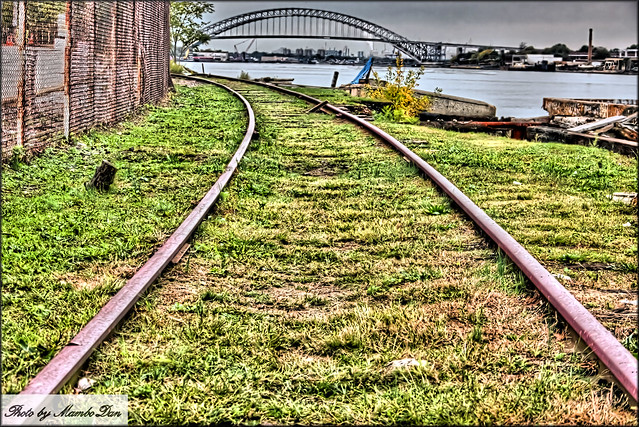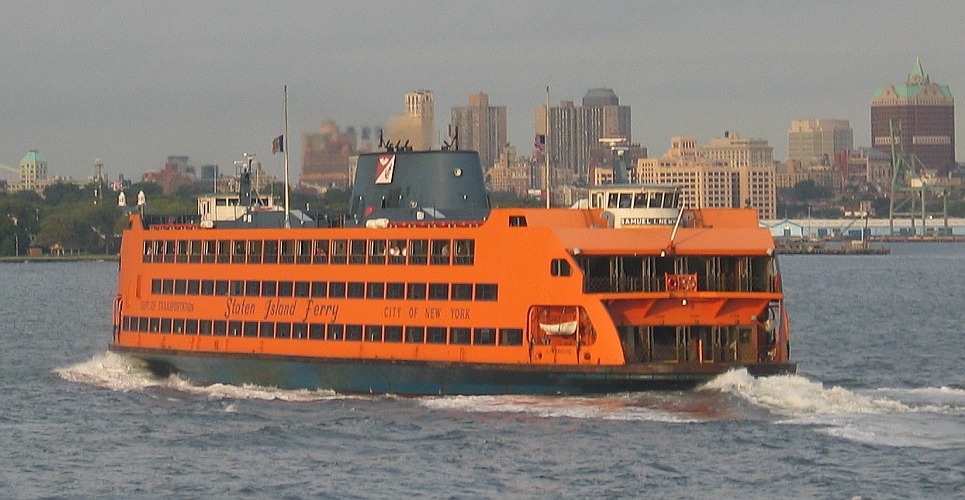
A May 2012 report called for a busway rather than light rail for the North Shore right-of-way. (Click to enlarge)
The MTA has a lot of federal money on hand to build up its — and the region’s — resiliency in the post-Sandy world. Expanding transit access and reducing auto dependency is a major part of that resiliency as it better equips the city to deal with both the aftermath of storms and the build-up to them. But some of that spending is coming under fire in a rather nuanced way.
The project at issue concerns Staten Island’s defunct North Shore Rail Line. The MTA has proposed turning it into a busway and ruled out light or heavy rail due to costs. Staten Island politicians and transit advocates are not keen to pave over a rail right-of-way for a bunch of buses, and as the MTA looks to move forward with the busway thanks to an infusion of Sandy recovery dollars, these Staten Islanders are crying foul.
Mark Stein of the Staten Island Advance had more:
The MTA has approved a plan to construct a North Shore bus rapid transit (BRT) system and pay for it with Superstorm Sandy Recovery Funds, according to an agency capital program report obtained by the Advance. While Assemblyman Joe Borelli said the agency’s board-approved project is important for the North Shore, he believes the money isn’t being properly spent, especially since the area where the BRT system will go wasn’t affected by the storm the way the South and East shores were.
“If you’re going to include Sandy money, at least include us folks down here,” said Borelli, adding that while the project is necessary for the North Shore, the money being spent should go to resiliency projects that cover the geographic area that suffered transit losses during the storm.
“What we’re looking to do is in terms of resiliency, in the event of a network failure, travel would be impossible between parts of Staten Island and Manhattan,” said MTA spokesman Kevin Ortiz. “This busway would remedy that. It would offer an alternate means to the ferry for Staten Island customers going into Manhattan.”
The bus path that runs parallel to the Kill van Kull would also be available for emergency vehicles to use at all times, said Ortiz.
It’s easy to see how this project can benefit everyone and be a part of resiliency planning. It is, in fact, the point of resiliency money. But while these objections are easy to dismiss, Borelli raises another point: Moving forward with the North Shore busway could put an end to discussions concerning a light rail network for Staten Island that connects over the Bayonne Bridge with the Hudson Bergen Light Rail system.
“Advocates of the project would prefer that the West Shore line link up with the proposed North Shore light rail, as part of an Islandwide mass-transit transformation,” Stein explains. “Borelli said the West Shore rail system could be lost because the former North Shore line would be paved over with asphalt for the BRT, ending the possibility of a linked West Shore and North Shore rail system.”
I understand why DOT and the MTA have engaged in a love affair with buses of late. It’s far cheaper, quicker and easier to implement than it is to build a subway line or install a light rail system with the necessary infrastructure. It’s a change that, despite the horrendously slow rollout in Brooklyn, could happen in the span of a few months. Yet, it’s a poor substitute for something with higher capacity, more frequent service and the potential for connections to another service.
New York has resisted the allure of light rail as cities as transit-starved as Phoenix and Houston have turned to it as a potential solution to congestion. Staten Island deserves the same before the MTA paves over a rail right of way for a bunch of buses.







